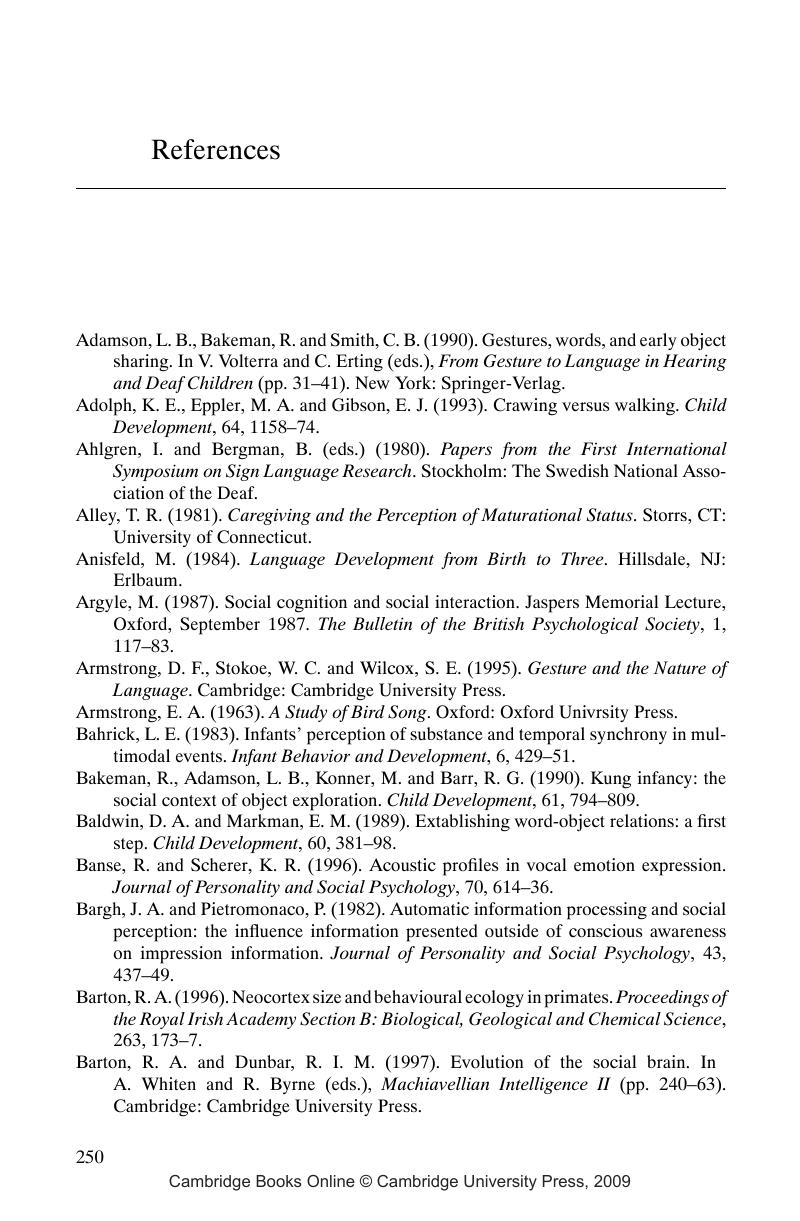Book contents
- Frontmatter
- Contents
- List of figures
- List of tables
- Acknowledgements
- 1 Introduction
- 2 The development of the ability to take turns
- 3 Cooing in three-month-old infants
- 4 The development of vocal imitation
- 5 How infant-directed speech influences infant vocal development
- 6 From laughter to babbling
- 7 Earliest language development in sign language
- 8 From babbling to speaking
- 9 Summary and conclusion
- References
- Index
- References
References
Published online by Cambridge University Press: 15 January 2010
- Frontmatter
- Contents
- List of figures
- List of tables
- Acknowledgements
- 1 Introduction
- 2 The development of the ability to take turns
- 3 Cooing in three-month-old infants
- 4 The development of vocal imitation
- 5 How infant-directed speech influences infant vocal development
- 6 From laughter to babbling
- 7 Earliest language development in sign language
- 8 From babbling to speaking
- 9 Summary and conclusion
- References
- Index
- References
Summary

- Type
- Chapter
- Information
- The Onset of Language , pp. 250 - 272Publisher: Cambridge University PressPrint publication year: 2003



